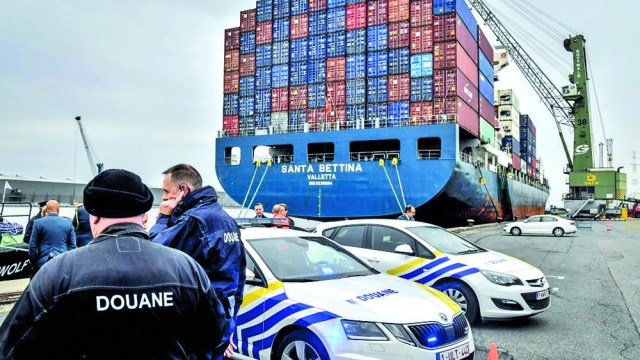Belgium drug bust
…says Govt will go after persons involved
Government has pledged to get to the bottom of the massive drug interception in Belgium, which originated from Guyana and amounted to a whopping US$1.06 billion.
Vice President Bharrat Jagdeo told reporters at a press conference on Friday that there seems to be heavy local involvement. As such, he noted that local authorities are working with the US Drug Enforcement Agency (DEA) to probe the matter.














